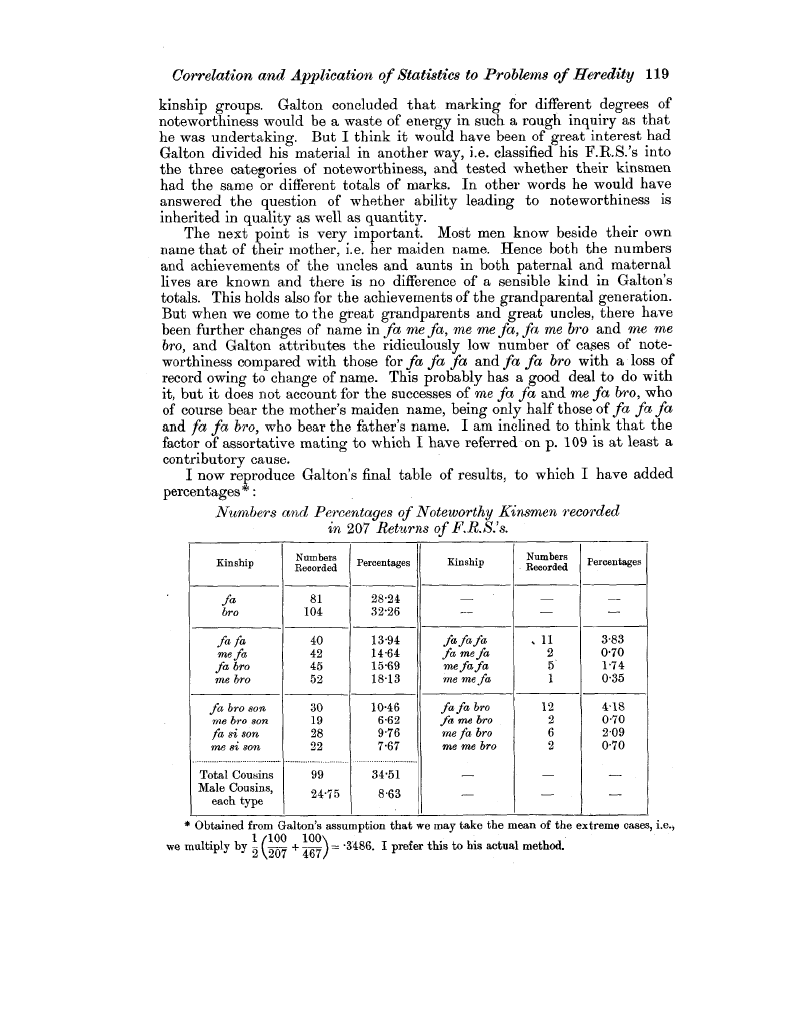| ||||||

OCR Rendition - approximate
Correlation and Application of Statistics to Problems of Heredity 119 kinship groups. Galton concluded that marking for different degrees of noteworthiness would be a waste of energy in such a rough inquiry as that he was undertaking. But I think it would have been of great interest had Galton divided his material in another way, i.e. classified his F.R.S.'s into the three categories of noteworthiness, and tested whether their kinsmen had the same or different totals of marks. In other words he would have answered the question of whether ability leading to noteworthiness is inherited in quality as well as quantity. The next point is very important. Most men know beside their own name that of their mother, i.e. her maiden name. Hence both the numbers and achievements of the uncles and aunts in both paternal and maternal lives are known and there is no difference of a sensible kind in Galton's totals. This holds also for the achievements of the grandparental generation. But when we come to the great grandparents and great uncles, there have been further changes of name in fa me fa, me me fa, fa me bro and me me bro, and Galton attributes the ridiculously low number of cases of noteworthiness compared with those for fa fa fa and fa fa bro with a loss of record owing to change of name. This probably has a good deal to do with it, but it does not account for the successes of me fa fa and me fa bro, who of course bear the mother's maiden name, being only half those of fa fa fa and fa fa bro, who bear the father's name. I am inclined to think that the factor of assortative mating to which I have referred on p. 109 is at least a contributory cause. I now reproduce Gal ton's final table of results, to which I have added percentages Numbers and Percentages of Noteworthy Kinsmen recorded
* Obtained from Galton's assumption that we may take the mean of the extreme cases, i.e.,
|